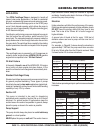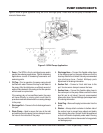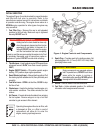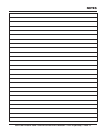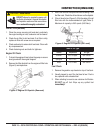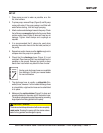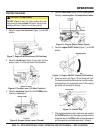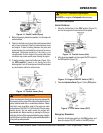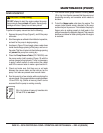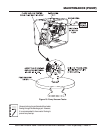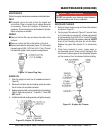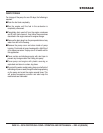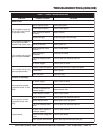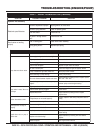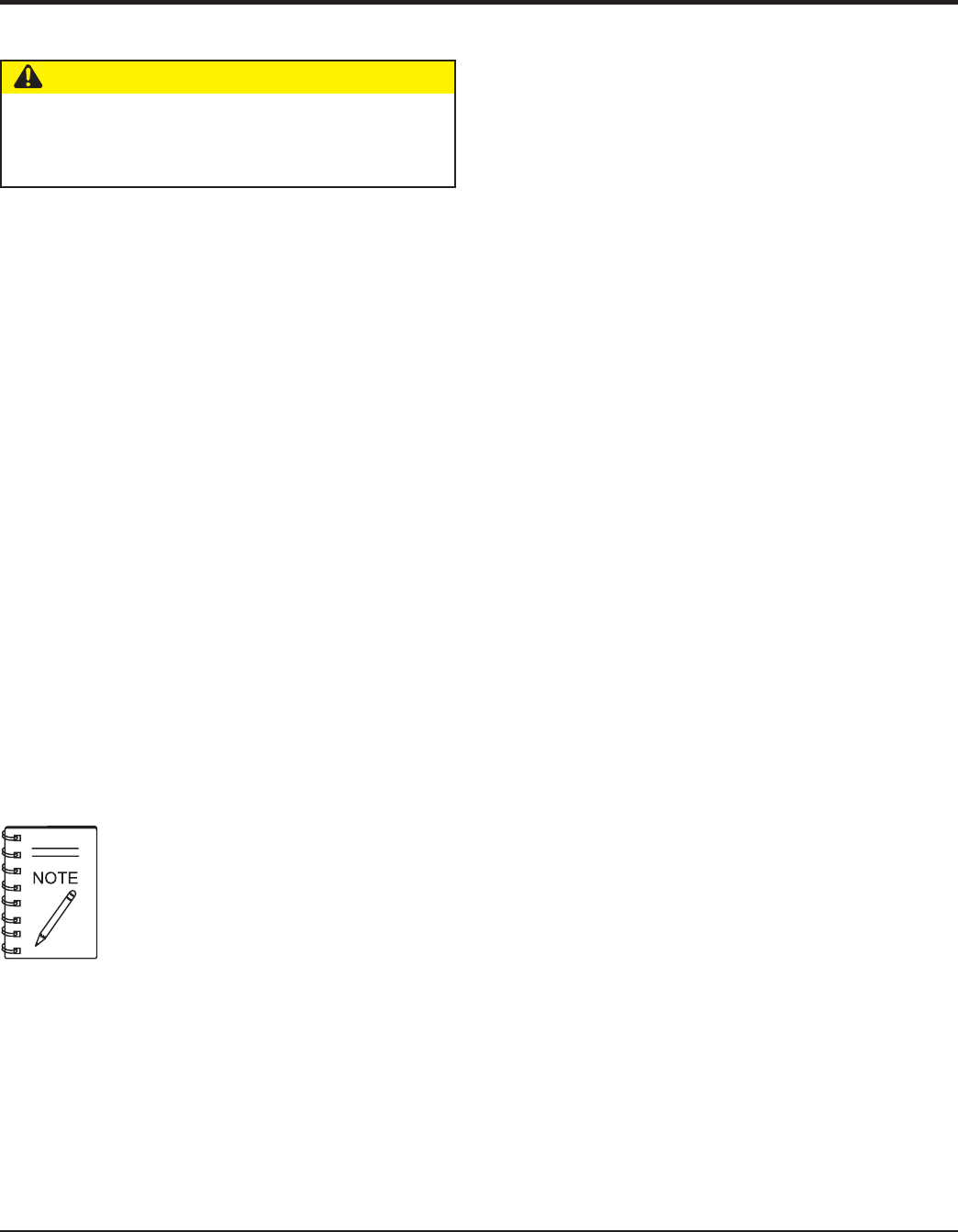
PAGE 20 — QP2H CENTRIFUGAL PUMP • OPERATION AND PARTS MANUAL — REV. #0 (08/04/08)
MAINTENANCE (PUMP)
PUMP VACUUM TEST
To perform the pump vacuum test do the following:
1. Remove the pump fill cap (Figure 2), and fill the pump
with water.
2. Start the engine as outlined in the initial start-up section,
and wait for the pump to begin pumping.
3. As shown in Figure 18 (next page), place a water hose
inside the discharge opening of the pump, and turn on
the water. This flow of water into the discharge opening
will
prevent
the pump from running dry.
4. Place the
Pump Vacuum Tester
(P/N 7000030)
over
the pump suction (inlet) opening (Figure 18) with the
vacuum gauge facing upwards. It may be necessary
to apply a small amount of water around the rubber
seal of the vacuum tester to make a good suction fit.
5. Check and make sure that there are no air leaks
between the vacuum tester and the inlet port on the
pump. If air leaks are present reset vacuum tester.
6. Run the pump for a few minutes while monitoring the
vacuum gauge. If the gauge indicates a reading between
-25 and -20 in. Hg. (inches of mercury) then it can be
assumed that the pump is working correctly.
CAUTION — Pump Priming
DO NOT attempt to start the engine unless the pump
has previously been
primed
with water. Severe pump
damage will occur if pump has not been primed.
25 in. Hg (inches of mercury) translates into
25 feet of lift at sea level.
7. If the vacuum tester gauge indicates a reading
below
-20 in. Hg, it can then be assumed that the pump is not
functioning correctly, and corrective action needs to
be taken.
8. To test the
flapper valve
, shut down the engine. The
vacuum tester should remain attached to the pump
suction inlet port by vacuum. This indicates the pump's
flapper valve is seating properly to hold water in the
suction hose when the engine is stopped. This prevents
backflow and allows for faster priming when the engine
is restarted.



